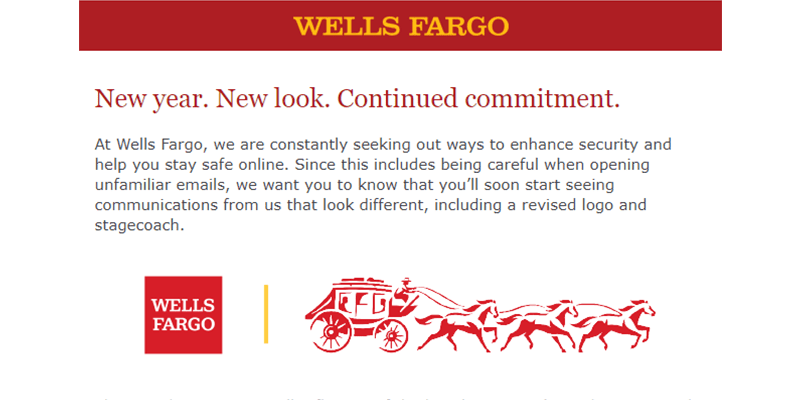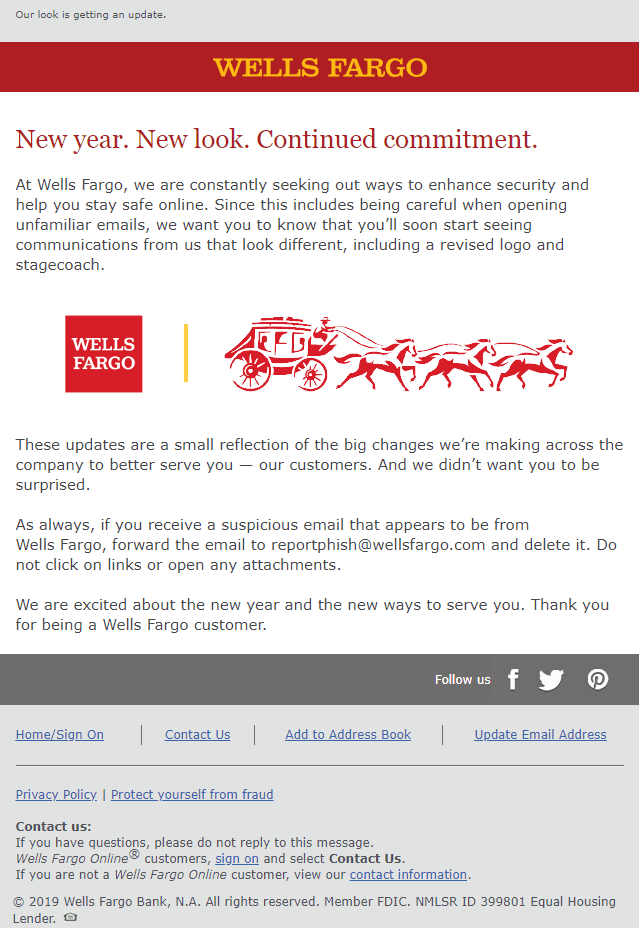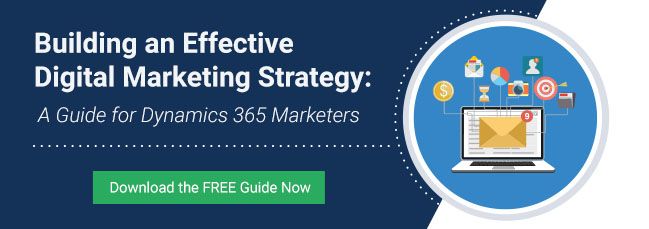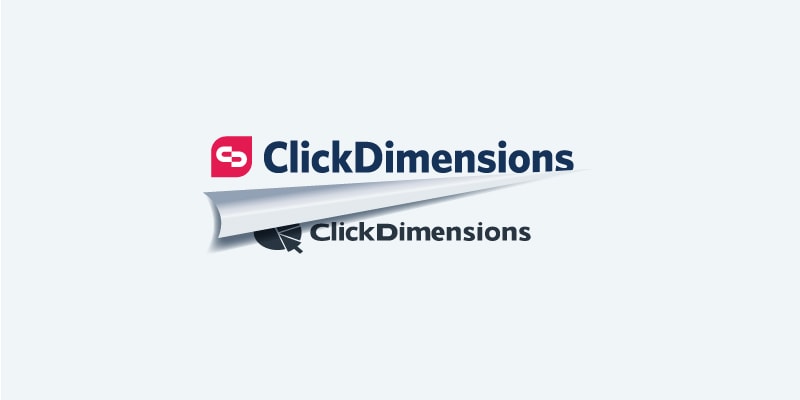These days, it seems like graphic design—just like everything else—is constantly evolving at the speed of light. Think about websites of the early 2000s; they were atrocious, right? Flashing lights, spinning graphics, music playing—randomly and without your permission—in the background. Today, if you were to open a website that looked like that, you would wonder what planet you teleported to.
The same goes for logos. While there are, of course, the classic logos that have stood the test of time, most brands these days are opting for an aesthetic facelift every seven to 10 years. Websites, on the other hand, often get redesigned every two to three years.
Regardless of your rebranding schedule, once you have made the decision to rebrand, the next step should be thinking about your strategy to announce this rebrand to customers. We recently stumbled upon a great example from Wells Fargo, featuring a carefully crafted message that’s informative yet engaging.
The Wells Fargo email does a lot of things right. It immediately introduces the concept of a new look with a bold header. Then, it spins the rebrand into one that has a positive implication for customers:
“At Wells Fargo, we are constantly seeking out ways to enhance security and help you stay safe online. Since this includes being careful when opening unfamiliar emails, we want you to know that you’ll soon start seeing communications from us that look different, including a revised logo and stagecoach.”
While the aesthetic look of the Wells Fargo brand may actually have nothing to do with the security of Wells Fargo customers, this email copy brilliantly links the two. But this spin also contains a gold nugget of wisdom, because it’s absolutely true that customers may be wary of emails coming from your business if they don’t recognize them. They may also be wary of a new website if it looks different from what they’re used to, particularly if you retain or request sensitive customer data. Brands have distinct personalities, and websites are like locations—imagine if you went to a friend’s house and everything (including your friend and her interior design choices) was different. This can be what an unannounced rebrand feels like to an unsuspecting customer.
As a result, it’s important to be clear and specific in what is changing. Is it your logo? Your website? Your color palette? All of the above? Customers want to know what to expect. Change can often be unsettling, so make sure your customers know you will be providing the same or even better service than they’re used to. And don’t forget to thank them for their loyalty!
Additionally, it might be helpful—for you as well as the customer—to provide a way for customers to reach out if they have questions about the rebrand. You can also use this as a way to crowdsource tracking for phishing or other scams that may be leveraging your business identity.
These guidelines become even more crucial if your organization’s rebrand includes something more holistic than aesthetic, such as a name change. If your company has recently been acquired or merged with another company, you will want to be carefully transparent in customer communications. This can be a fine line to walk depending on the circumstances.
If your website domain and/or email sending domain are changing, you will want to take a few extra steps to also ensure a consistent experience. Don’t forget to update your CNAMEs. You will also want to update your domain records and the tracking script on your website to reflect the correct domain. If the domain in the tracking script and the domain on the website don’t match, the tracking script may not function as expected, which could cause you to lose out on some valuable analytics.
At the end of the day, remember that one of the most important and often overlooked steps during rebranding is customer communication. Fortunately, ClickDimensions’ email marketing tools can help you create a carefully crafted message and send it out to your customers quickly and easily. And if you have customers that require specialized messaging, you can easily segment your message, providing valuable contacts with some extra transparency and TLC that may not be necessary or appropriate for prospects less familiar with you and your brand.
With these suggestions in mind, putting together a strategy for your rebranding communication plan should be a cinch.
Happy Marketing!










